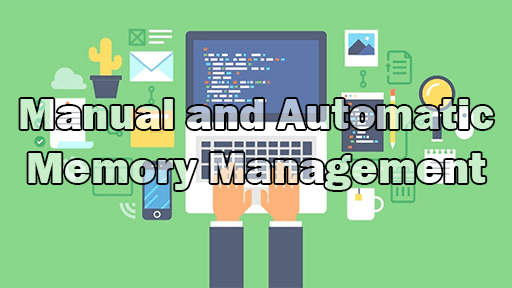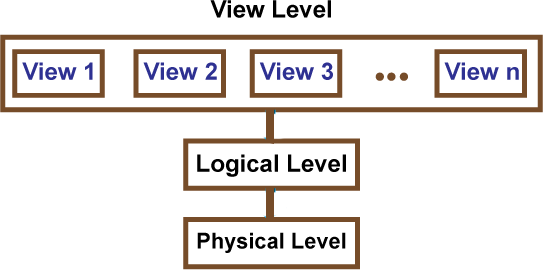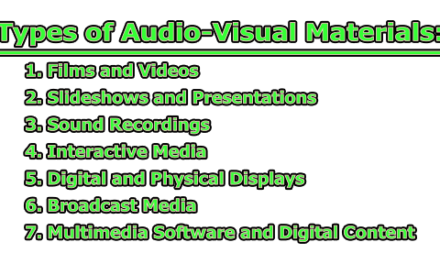Manual and Automatic Memory Management:
Memory management is the process of handling a computer’s memory resources during a program’s execution. The primary goal is to allocate memory as needed, efficiently utilize available resources, and deallocate memory when it is no longer required. Effective memory management contributes to a system’s stability, responsiveness, and overall performance. Two prominent approaches to memory management are manual and automatic memory management. In this exploration, we will delve into the intricacies of both methods, discussing their advantages, disadvantages, and how they impact the overall functioning of computer systems.
Manual Memory Management:
Manual memory management involves developers explicitly allocating and deallocating memory during the program’s execution. In languages like C and C++, programmers have direct control over memory operations through functions like malloc and free. While this approach provides a high level of control, it also introduces challenges and potential pitfalls.
Advantages of Manual Memory Management:
1. Fine-Tuned Control: Developers have direct control over memory allocation and deallocation, allowing for precise resource management tailored to the specific needs of the application.
2. Efficiency Optimization: Skilled developers can optimize memory usage for performance-critical sections, potentially leading to more efficient resource utilization compared to automatic management systems.
3. Resource Awareness: Working with manual memory management enhances developers’ understanding of memory concepts, fostering a deeper awareness of resource utilization patterns in their code.
4. Real-Time Systems: In scenarios where real-time responsiveness is crucial, manual memory management offers the ability to control when and how memory is allocated and deallocated to meet strict timing requirements.
5. Compatibility: Some legacy systems and languages still rely on manual memory management, and for developers familiar with these environments, it provides a level of familiarity and control that may be preferred in certain contexts.
Disadvantages of Manual Memory Management:
1. Complexity: Manual memory management increases code complexity, requiring developers to handle explicit allocation and deallocation, leading to more error-prone code.
2. Error-Prone: Developers are susceptible to memory-related errors such as memory leaks, dangling pointers, and buffer overflows, making debugging challenging.
3. Maintenance Challenges: Changes to the code may necessitate careful consideration of memory implications, making maintenance more laborious.
4. Resource Leaks: Incorrect deallocation or failure to release memory can result in resource leaks, degrading application performance over time.
5. Security Risks: Memory management errors in manual processes can lead to security vulnerabilities, exposing the system to potential exploitation.
Automatic Memory Management:
Automatic memory management, also known as garbage collection, is a process where the system automatically handles memory allocation and deallocation. Programmers are relieved of the burden of explicitly managing memory, as the runtime environment takes care of these tasks.
Advantages of Automatic Memory Management:
1. Simplicity: Automatic memory management eliminates the need for explicit memory allocation and deallocation, simplifying code and reducing the risk of errors.
2. Productivity: Developers can focus on high-level application logic instead of low-level memory management concerns, leading to faster development cycles.
3. Memory Leak Prevention: Garbage collection identifies and reclaims unreachable objects, preventing memory leaks and improving overall application stability.
4. Reduced Bug Complexity: Automatic memory management minimizes the occurrence of memory-related bugs, making code more robust and easier to maintain.
5. Enhanced Resource Utilization: By dynamically managing memory, automatic systems optimize resource usage, adapting to the application’s changing needs efficiently.
Disadvantages of Automatic Memory Management:
1. Runtime Overhead: Automatic memory management introduces runtime overhead as the system periodically scans and identifies unreachable objects, impacting the overall performance of the application.
2. Lack of Control: Developers have less direct control over memory management, limiting their ability to fine-tune resource allocation for specific performance or resource-constrained scenarios.
3. Potential for Pause Times: Some garbage collection implementations may lead to noticeable pauses during the collection process, affecting the responsiveness of real-time or low-latency applications.
4. Resource Consumption: Automatic memory management systems may consume additional resources to maintain data structures and algorithms for garbage collection, potentially impacting the overall efficiency of the application.
5. Difficulty in Predicting Timing: Due to the non-deterministic nature of garbage collection, developers may find it challenging to predict when memory will be reclaimed, making it more difficult to manage resource usage in time-sensitive applications.
Comparative Analysis of Manual and Automatic Memory Management:
1. Performance:
- Manual Management: When done correctly, manual memory management can be more performance-efficient, as developers have fine-grained control over memory usage. However, mistakes can lead to performance degradation or crashes.
- Automatic Management: While introducing some overhead, automatic memory management generally ensures a more stable and secure environment by preventing memory leaks and related issues.
2. Development Productivity:
- Manual Management: Requires developers to spend more time on memory-related concerns, potentially slowing down the development process. However, it may lead to optimized and efficient code.
- Automatic Management: Accelerates development by reducing the cognitive load on developers, allowing them to focus on high-level functionality. This can lead to faster time-to-market.
3. Code Complexity and Maintenance:
- Manual Management: Increases code complexity due to the need for explicit memory management. Maintenance is challenging, and code changes may require careful consideration of memory-related implications.
- Automatic Management: Simplifies code, making it more readable and maintainable. Developers can avoid common pitfalls associated with manual memory management, leading to more robust and scalable codebases.
4. Error Prone Nature:
- Manual Management: Prone to errors such as memory leaks, dangling pointers, and buffer overflows. Debugging and fixing memory-related issues can be time-consuming.
- Automatic Management: Reduces the likelihood of memory-related errors, but issues like memory leaks can still occur if references are unintentionally retained.
In conclusion, the choice between manual and automatic memory management is a nuanced decision that depends on the specific requirements and priorities of a given project. Manual memory management offers fine-tuned control and efficiency optimization but comes with the cost of increased complexity, error-proneness, and maintenance challenges. On the other hand, automatic memory management provides simplicity, productivity gains, and enhanced stability by preventing common memory-related bugs. However, it introduces runtime overhead, potential pause times, and a lack of granular control. In the ever-evolving landscape of programming, modern languages often gravitate towards automatic memory management for its benefits in facilitating faster development cycles and reducing the likelihood of critical errors. Nonetheless, a judicious choice between these approaches, or even a hybrid integration, is essential to strike a balance that aligns with the specific needs and constraints of a given application or system.

Library Lecturer at Nurul Amin Degree College










